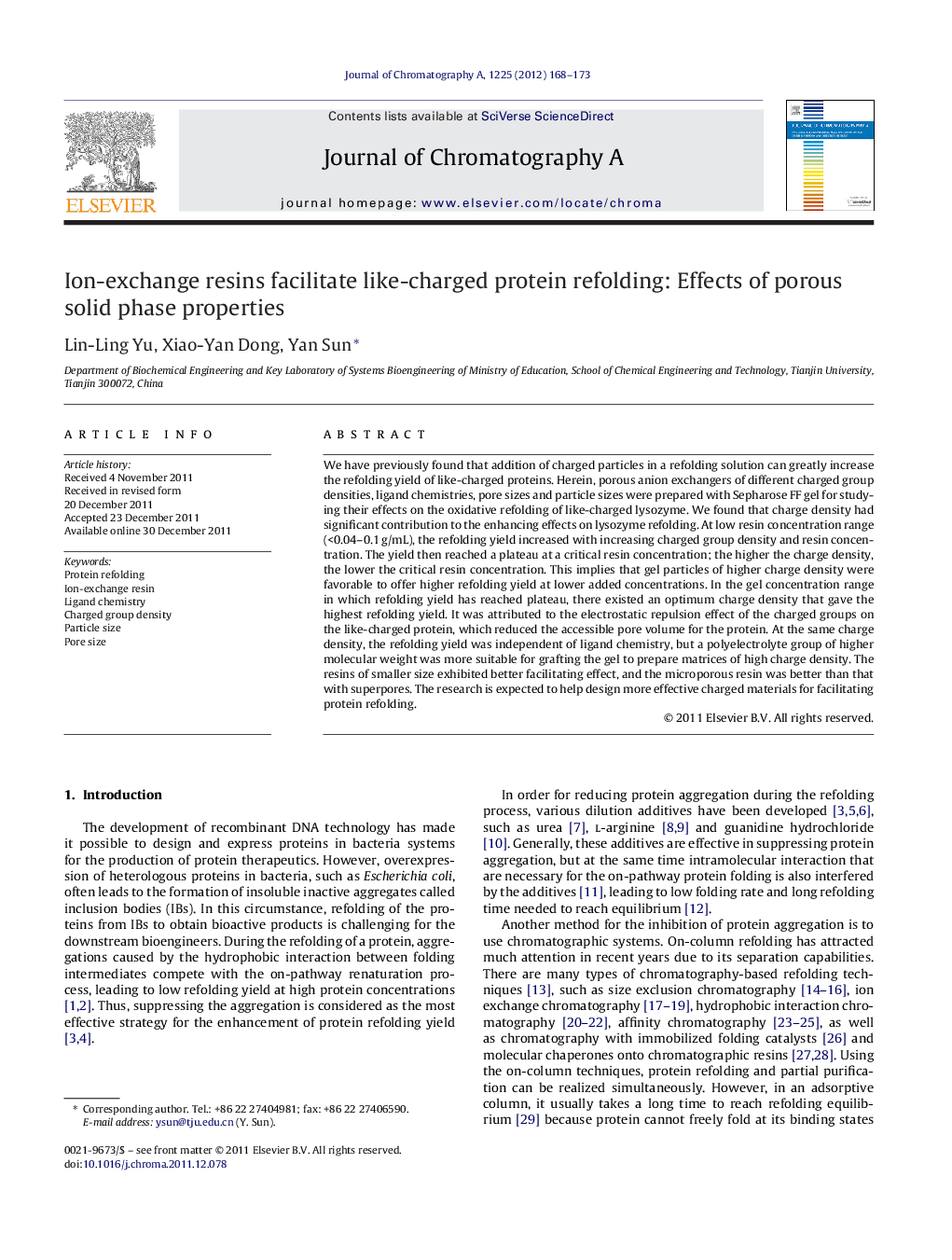| کد مقاله | کد نشریه | سال انتشار | مقاله انگلیسی | نسخه تمام متن |
|---|---|---|---|---|
| 1206942 | 1493700 | 2012 | 6 صفحه PDF | دانلود رایگان |

We have previously found that addition of charged particles in a refolding solution can greatly increase the refolding yield of like-charged proteins. Herein, porous anion exchangers of different charged group densities, ligand chemistries, pore sizes and particle sizes were prepared with Sepharose FF gel for studying their effects on the oxidative refolding of like-charged lysozyme. We found that charge density had significant contribution to the enhancing effects on lysozyme refolding. At low resin concentration range (<0.04–0.1 g/mL), the refolding yield increased with increasing charged group density and resin concentration. The yield then reached a plateau at a critical resin concentration; the higher the charge density, the lower the critical resin concentration. This implies that gel particles of higher charge density were favorable to offer higher refolding yield at lower added concentrations. In the gel concentration range in which refolding yield has reached plateau, there existed an optimum charge density that gave the highest refolding yield. It was attributed to the electrostatic repulsion effect of the charged groups on the like-charged protein, which reduced the accessible pore volume for the protein. At the same charge density, the refolding yield was independent of ligand chemistry, but a polyelectrolyte group of higher molecular weight was more suitable for grafting the gel to prepare matrices of high charge density. The resins of smaller size exhibited better facilitating effect, and the microporous resin was better than that with superpores. The research is expected to help design more effective charged materials for facilitating protein refolding.
► Refolding yield increased with increasing charged group density and resin concentration.
► The yield then reached a plateau at a critical resin concentration, which decreased with increasing charged group density.
► There existed an optimum charged group density that gave the highest refolding yield.
► High-molecular-weight polyelectrolyte was favorable to prepare high charged group density gels.
► Refolding yield was independent of ligand chemistry.
Journal: Journal of Chromatography A - Volume 1225, 17 February 2012, Pages 168–173